Second World War Timeline
The Second World War was one of the most significant events in Canadian history. Canada played a vital role in the Battle of the Atlantic, and contributed forces to the campaigns of western Europe beyond what might be expected of a small nation of then only 11 million people. Between 1939 and 1945 more than one million Canadian men and women served full-time in the armed services.
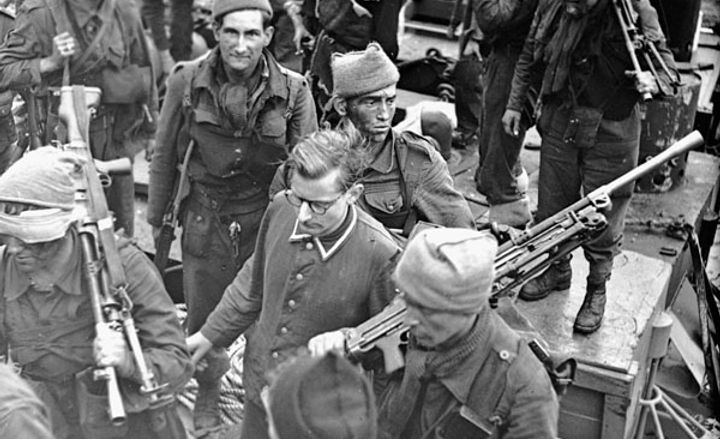
-
September 01, 1939
Second World War Timeline
World War II Begins
World War II began when Adolf Hitler sent the German army into Poland.
-
September 03, 1939
Second World War Timeline
Wartime Prices and Trade Board
The Wartime Prices and Trade Board was established to control inflation and to ensure that social unrest did not interfere with the upcoming war effort.
-
September 10, 1939
Second World War Timeline
Canada Declares War on Germany
Canada declared war on Germany, 7 days after Britain and France. The first Canadian troops left for England in December. Although "obliged to go to war at Britain's side," King's delay of a week was a symbolic gesture of independence.
-
December 10, 1939
Second World War Timeline
First Troops Sail for Britain
The first Canadian troop convoy sailed for Britain escorted out of Halifax by HMC ships Ottawa, Restigouche, Fraser and St. Laurent.
-
December 17, 1939
Second World War Timeline
Air Training Plan Established
The British Commonwealth Air Training Plan was established. Operating from 1940–45 the BCATP trained some 131,000 airmen — one-half the total Commonwealth aircrew — a decisive Canadian contribution to victory in the Second World War.
-
April 11, 1940
Second World War Timeline
Vancouver Shipyards Gear up for War
Vancouver shipyards began to build corvettes and minesweepers for action in the Battle of the Atlantic.
-
April 25, 1940
Second World War Timeline
Québec Women Get Vote
Québec women were the last in Canada to earn the rights to vote and run for office in provincial elections.
-
June 05, 1940
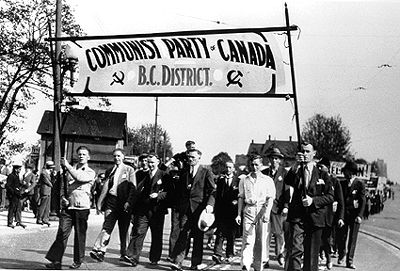
Second World War Timeline
Communists Declared Illegal
Nazi, Fascist and Communist groups were declared illegal in Canada, and their leaders were jailed.
-
June 21, 1940
Second World War Timeline
Conscription Act Passed
Parliament passed the National Resources Mobilization Act, providing for the conscription of able-bodied men for home defence. It was amended in 1942 by Bill 80, giving the government power to conscript for overseas service.
-
June 21, 1940
Second World War Timeline
National Resources Mobilization
The National Resources Mobilization Act responded to the public clamour for a more effective Canadian war effort that arose in the wake of the stunning German victories in Belgium and France.
-
August 05, 1940

Second World War Timeline
Houde Arrested for Sedition
Camillien Houde, the mayor of Montréal, was arrested by the RCMP for sedition in having advised Québec men not to take part in the compulsory National Registration.
-
August 17, 1940

Second World War Timeline
Ogdensburg Agreement
PM Mackenzie King and President Roosevelt held a conference on the defence of North America at Ogdensburg, NY. The Odgensburg Agreement was signed, and the Permanent Joint Board of Defence was created on August 18.
-
August 25, 1940
Second World War Timeline
McNab Meets Enemy
Squadron Leader E.A. McNab, of the Canadian fighter squadron, first met the enemy during the Battle of Britain. By October the squadron had downed 30 enemy aircraft.
-
January 23, 1941
Second World War Timeline
German Prisoner Escapes
Oberleutant Franz von Warrna escaped from a train near Smiths Falls, Ont., and returned to Europe. He was the only German prisoner of war to make it back across the Atlantic from Canada.
-
April 20, 1941

Second World War Timeline
Hyde Park Declaration
Mackenzie King and F.D. Roosevelt signed the Hyde Park Declaration, uniting the economies of the two countries for war.
-
April 29, 1941
Second World War Timeline
Women Admitted to the Québec Bar
Québec law was changed to admit women to the Bar. They would have to wait until 1956 to become notaries.
-
June 11, 1941
Second World War Timeline
Census Released
The census reported the population of Canada as 11 506 655.
-
June 27, 1941
Second World War Timeline
Women Enlist in Army
The federal government passed legislation that allowed women to enlist in the army.
-
August 14, 1941
Second World War Timeline
Atlantic Charter
At Placentia Bay, Nfld, British prime minister Winston Churchill and American president F.D. Roosevelt signed the Atlantic Charter.
-
August 18, 1941

Second World War Timeline
Jean Flatt Davey is Appointed to the CWAAF Medical Branch
After being recruited for the newly created Canadian Women’s Auxiliary Air Force (CWAAF) in 1941, Jean Flatt Davey was appointed to the medical branch. She was the first female doctor to become a commissioned officer in the Canadian Armed Forces and only the second officer (after Kathleen Oonah Walker) commissioned in the CWAAF. Davey and Walker soon toured the country, selecting the first 150 members of the CWAAF.
-
September 18, 1941
Second World War Timeline
Vancouver Asahi Play Last Game
The Vancouver Asahi played their last baseball game as the Japanese community was banished to exile on farms and internment camps.
-
December 07, 1941
Second World War Timeline
Canada Declares War on Romania
Canada declared war on Romania, Hungary, Finland and Japan.
-
December 07, 1941
Second World War Timeline
Japan Attacks Pearl Harbor
Immediately following the Japanese attack on Pearl Harbor on 7 December 1941, 38 Japanese Canadians were arrested as subversives. Twelve weeks after the attack, the federal government used the War Measures Act to order the removal of all Japanese Canadians residing within 160 km of the Pacific Coast. About 21,000 Japanese Canadians in BC, more than 75 per cent of whom were Canadian citizens, were fingerprinted, issued identification cards and removed from their homes. More than 8,000 were moved to a temporary detention camp (where women and children were held in a livestock building) at the Pacific National Exhibition in Vancouver. (See Japanese Canadians Held at Hastings Park.)
-
December 08, 1941
Second World War Timeline
Canada Declares War on Japan
Canada joined Great Britain and the US in declaring war on Japan after the Japanese attacked the US Pacific Fleet at Pearl Harbor on Dec 7.
-
December 08, 1941

Second World War Timeline
Japanese Attack Hong Kong
The Japanese attacked the mainland (Kowloon) side of Hong Kong, and Hong Kong itself on December 18. Hong Kong surrendered on December 25. Numerous Canadians were killed or died in Japanese prison camps.
-
December 19, 1941
Second World War Timeline
Osborn Earns Victoria Cross
Gallantry shown by Company Sergeant-Major J.R. Osborn, Royal Winnipeg Grenadiers, in action against the Japanese at Hong Kong on this date led to the posthumous award of the Victoria Cross.
-
January 01, 1942
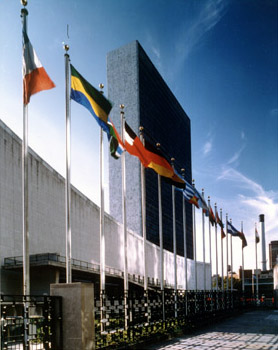
Second World War Timeline
United Nations Term Used
The name "United Nations", coined by United States President Franklin D. Roosevelt, was first used in the "Declaration by United Nations" of 1 January 1942, during the Second World War, when representatives of 26 nations pledged their Governments to continue fighting together against the Axis Powers.
-
January 13, 1942

Second World War Timeline
Operation Drumbeat
Germany's first strategic advance by submarines on North American shores began as Operation Drumbeat (Paukenschlag).
-
January 14, 1942
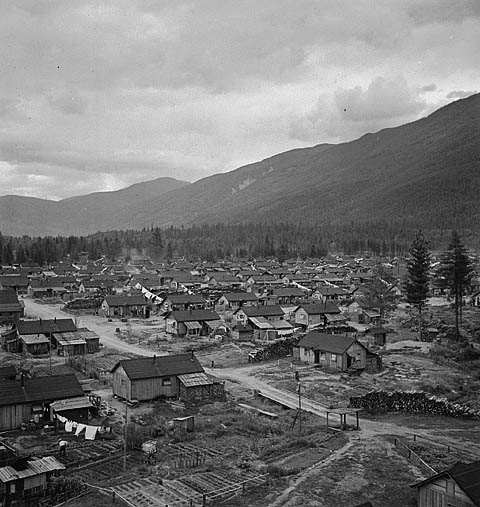
Second World War Timeline
Order-in-Council Authorizes Internment of Japanese Canadians
A federal Order-in-Council declared a zone extending 100 miles inland from British Columbia’s Pacific coast as a “protected area” and authorized the removal of all male Japanese nationals between the ages of 18 and 45 to interior internment camps. Two months later, the removals would be expanded to include all Japanese Canadians. The internment of Japanese Canadians during the Second World War is a deep scar on our historical memory.
-
February 26, 1942

Second World War Timeline
Japanese Canadians Interned
Invoking the War Measures Act, the Department of Justice issued a notice that called for the internment of citizens of Japanese ancestry. Some 20,881 men, women and children, 75 per cent of whom were Canadian citizens, were removed from their homes and moved to temporary detention camps. They remained in detention for the remainder of the Second World War.
-
June 20, 1942
Second World War Timeline
Japanese Shell BC Coast
A Japanese submarine fired a few shells at Estevan Point on Vancouver Island, with no damage.
-
July 20, 1942

Second World War Timeline
Veterans' Land Act
The Veterans' Land Act made provision for returning veterans to obtain loans in order to buy land.
-
August 07, 1942
Second World War Timeline
Battle for Guadalcanal
Guadalcanal, in the southern Solomon Islands, was assaulted by the US Marines in one of the most bitterly fought campaigns of World War II.
-
August 19, 1942

Second World War Timeline
Dieppe Raid
Canadian and British troops raided the French port of Dieppe to test German defences. The raid lasted only 9 hours, but of the nearly 5000 Canadian soldiers involved, more than 900 were killed and 1874 taken prisoner.
-
August 19, 1942
Second World War Timeline
Merritt Awarded Victoria Cross
Vancouver's Lieutenant-Colonel Cecil Merritt became the first Canadian in WWII to win the Victoria Cross, for his bravery during the Dieppe Raid. Taken prisoner, he spent the rest of the war in POW camps.
-
September 09, 1942
Second World War Timeline
Wartime Information Board
The Wartime Information Board was established to influence the public's interpretation of the war.
-
October 14, 1942
Second World War Timeline
Sinking of the SS Caribou
A German U-boat sank the Sydney to Channel-Port Aux Basques ferry, SS Caribou, with the loss of 167 lives - the worst inshore disaster of the Battle of the Atlantic in Canada.
-
November 08, 1942

Second World War Timeline
Frederick Peters Earns Victoria Cross
Actions by Captain Frederick Peters of the Royal Navy at Oran, North Africa earned him the Victoria Cross.
-
November 08, 1942
Second World War Timeline
German Agent Lands
The first German agent landed from a U-boat off New Carlisle, Québec and was promptly arrested by the police.
-
January 01, 1943

Second World War Timeline
RCAF Bomber Group
The airmen of the Canadian bomber squadrons became part of 6 Group, the first non-British formation to become part of the RAF Bomber Command. They flew their first operation on January 3/4 laying mines off the Frisian Islands.
-
January 13, 1943
Second World War Timeline
HMCS Ville de Quebec Sinks U-Boat
HMCS Ville de Quebec sank the German submarine U-224 in the western Mediterranean Sea.
-
February 02, 1943
Second World War Timeline
Germans Surrender at Stalingrad
The German army surrendered to the Soviet army at Stalingrad, generally considered one of the turning points of WWII.
-
July 10, 1943

Second World War Timeline
Invasion of Sicily
The Canadian 1st Infantry Division and the 1st Tank Brigade took part in the invasion of Sicily.
-
August 17, 1943

Second World War Timeline
Québec War Conference
Churchill and Roosevelt held the 6th Anglo-American War Conference, hosted by Mackenzie King (first Québec Conference) in Québec City.
-
August 24, 1943
Second World War Timeline
British-Canadian Nuclear Research Program Merges with American Manhattan Project
At the beginning of the Second World War, the UK’s nuclear weapons program was the most developed in the world. It had been transferred to Canada in 1942 due to the threat of a Nazi invasion and the bombing of Britain. At the Quebec Conference of August 1943, the British-Canadian program merged with the American Manhattan Project. Canada supplied and processed uranium, researched the production of plutonium, and provided scientists and facilities.
-
September 18, 1943
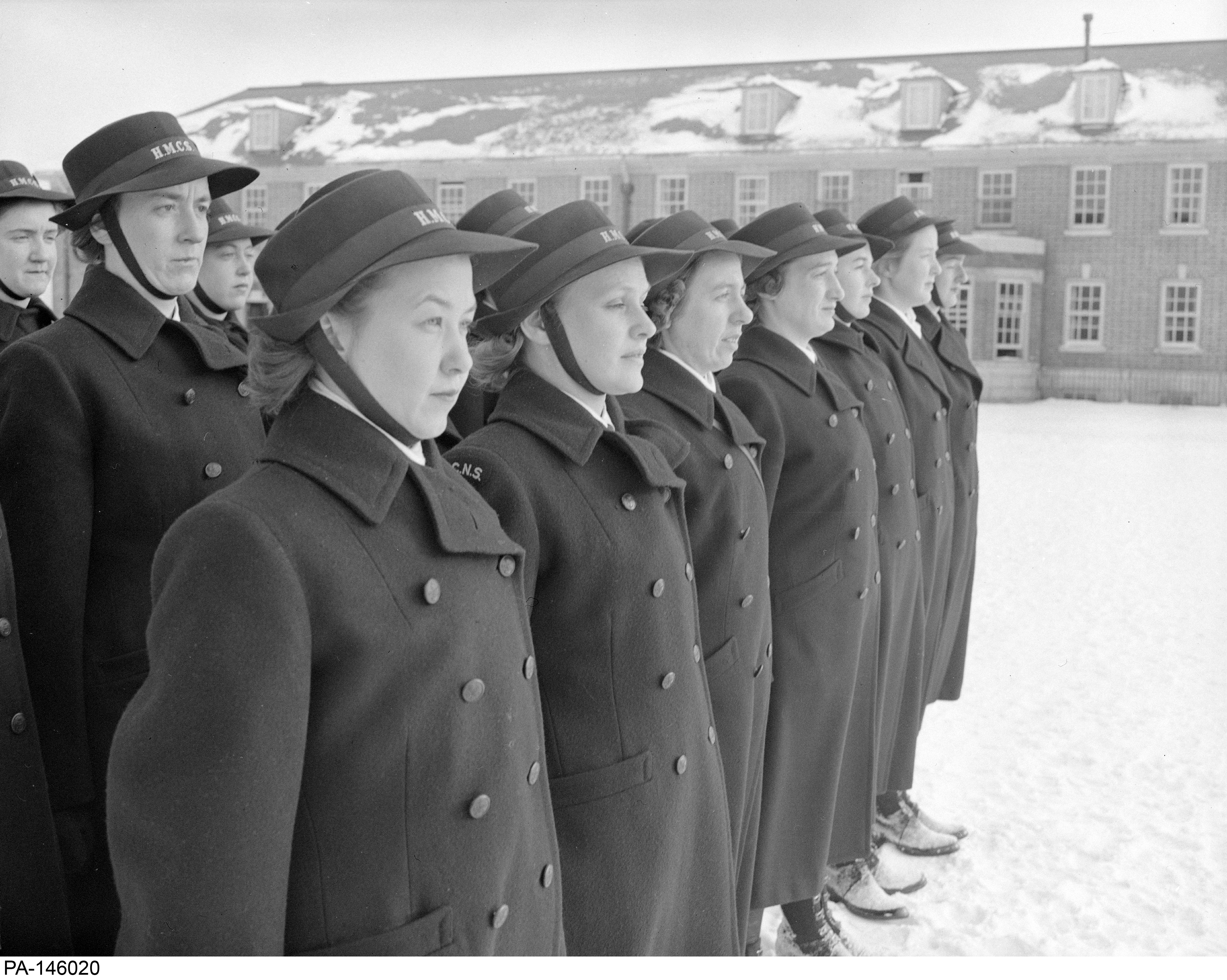
Second World War Timeline
Adelaide Sinclair Becomes First Canadian Director of the WRCNS
Adelaide Sinclair was appointed commander of the Women’s Royal Canadian Naval Service (WRCNS). Under her leadership, the service grew significantly. By the end of the war, more than 6,700 women had joined the WRCNS. Canadian “Wrens” served in 39 trades, from administration and signalling to coding and intelligence. Sinclair was director of the WRCNS until 1946, when the service was disbanded. She was the first Canadian director of the service as well as the first woman in the Royal Canadian Navy to earn the rank of captain.
-
October 14, 1943
Second World War Timeline
Canada Medal Approved
The Canada Medal was approved by King George VI and the Canadian Cabinet. It was the first distinctly Canadian decoration, although it was never awarded.
-
December 14, 1943
Second World War Timeline
Triquet Awarded Victoria Cross
Major Paul Triquet, Royal 22nd Regiment, was awarded the Victoria Cross for gallantry in Italy.
-
December 20, 1943
Second World War Timeline
Battle of Ortona
Infantry from the Loyal Edmonton Regiment and the Seaforth Highlanders of Canada attacked Ortona, Italy. The German forces withdrew on the night of December 27.
-
January 08, 1944
Second World War Timeline
HMCS Camrose Sinks U-boat
HMCS Camrose and HMS Bayntun sank the German submarine U-757 in the North Atlantic.
-
March 20, 1944

Second World War Timeline
Crerar Appointed Commander
Henry Duncan Graham Crerar was appointed Commander-in-Chief of the 1st Canadian Army.
-
September 01, 1944

Second World War Timeline
Liberation of Dieppe
The 1st Canadian Army liberated Dieppe, scene of the previous disaster.
-
September 11, 1944

Second World War Timeline
2nd Québec War Conference
The 2nd Québec Conference of Allied leaders Winston Churchill and F.D. Roosevelt was held at the Château Frontenac in Québec City, hosted by Mackenzie King.
-
October 01, 1944
Second World War Timeline
Battle of the Scheldt Estuary
The 2nd Canadian Division crossed the Antwerp Canal to begin the freeing of the Scheldt estuary and the port of Antwerp.
-
October 20, 1944
Second World War Timeline
Battle for Aachen
After a fierce defence by the Germans under Gen Hermann Balck, the Allies captured Aachen, the first German city captured by the Allies in World War II.
-
November 29, 1944
Second World War Timeline
Troops Mutiny at Terrace, BC
Officers regained control of their troops at the Terrace, BC, army base after 5 days of mutiny among soldiers, the most serious breach of discipline in the Canadian military during WWII.
-
December 24, 1944
Second World War Timeline
Clayoquot Torpedoed
HMCS Clayoquot was torpedoed by U-boat 806 and sinks in the Halifax approaches.
-
December 27, 1944
Second World War Timeline
HMCS St. Thomas Sinks U-boat
HMCS St. Thomas sank the German submarine U-877 in the North Atlantic.
-
January 16, 1945

Second World War Timeline
Canadian Casualties Announced
Canadian casualties from the start of the Second World War to November 30, 1944, were reported at 78 985, including 28 040 killed.
-
January 20, 1945
Second World War Timeline
First Conscripts Overseas
The first of Canada's home defence forces conscripted for overseas duty arrived in Britain. The government confirmed that over 6000 "zombies" absent without leave in Canada would be classed as deserters.
-
February 08, 1945

Second World War Timeline
Operation Veritable
Operation Veritable, a joint offensive by the 1st Canadian Army and British troops, was launched in the Rhineland area of Holland.
-
February 24, 1945
Second World War Timeline
CBC Shortwave Radio Service
The CBC began its international shortwave radio service. The first broadcasts were directed mainly to Canadian forces overseas.
-
February 25, 1945

Second World War Timeline
Cosens Earns Victoria Cross
Sergeant Aubrey Cosens of the Queen's Own Rifles of Canada earned the Victoria Cross for his heroism in fighting with the 1st Canadian Army in the Battle for the Rhineland. He died in action.
-
March 01, 1945

Second World War Timeline
Tilston Wins Victoria Cross
Major Frederick Tilston of the Canadian Army won a Victoria Cross for leading an attack on the Hochwald Forest defence line in the Battle for the Rhineland.
-
March 05, 1945

Second World War Timeline
Canada Attends UN Conference
Canada was invited to attend the United Nations Conference in San Francisco.
-
March 24, 1945

Second World War Timeline
Topham Wins Victoria Cross
Corporal Frederick George Topham, a medical orderly with the 1st Canadian Parachute Battalion, won the Victoria Cross for rescuing wounded men despite his own injuries in fighting east of the Rhine River in Germany.
-
March 29, 1945

Second World War Timeline
Air Training Plan Closes
A ceremony in Ottawa marked the closing of the British Commonwealth Air Training Plan. One of Canada's major contributions to the Second World War, the plan trained 130 000 pilots.
-
April 14, 1945

Second World War Timeline
Liberation of Arnhem, Holland
Troops of the 1st Canadian Army liberated Arnhem in Holland after 2 days of fighting.
-
April 16, 1945
Second World War Timeline
Sinking of HMCS Esquimalt
German U-boat U-190 sank HMCS Esquimalt near the Halifax lightship. U-190 surrendered to Canada on 11 May 1945 and was sunk ceremonially on 21 October 1947 where she had destroyed the Esquimalt.
-
April 18, 1945
Second World War Timeline
Push to the IJsselmeer
1st Canadian Corps pushed north to the Ijsselmeer, isolating German forces in the western Netherlands.
-
May 07, 1945
Second World War Timeline
VE-Day Riots
Victory in Europe Day (VE-Day) riots broke out in Halifax. About 10 000 servicemen looted and vandalized the city's downtown.
-
May 07, 1945
Second World War Timeline
Germans Surrender
The Germans surrendered unconditionally to the western Allies, and to the Soviets the next day.
-
May 07, 1945
Second World War Timeline
End of World War II in Europe
Hostilities ceased in Europe. The unconditional surrender of Germany was signed at Rheims on May 7, and it was ratified at Berlin on May 8.
-
June 26, 1945

Second World War Timeline
Canada Joins United Nations
Canada joined the United Nations at its founding.
-
July 18, 1945
Second World War Timeline
Bedford Magazine Explosion
An ammunition barge blew up at the naval magazine jetty on Bedford Basin, Halifax harbour. A chain reaction of fire, explosion and concussion rocked Halifax for a day.
-
August 06, 1945
Second World War Timeline
Bomb Dropped on Hiroshima
An atomic weapon was dropped on Hiroshima, Japan, leaving 130 000 people dead or missing.
-
August 09, 1945
Second World War Timeline
Bomb Dropped on Nagasaki
The second atomic bomb of World War II was dropped on the Japanese city of Nagasaki.
-
August 09, 1945
Second World War Timeline
Last Canadian Recepient of Victoria Cross Dies
Lieutenant Robert Hampton Gray of Trail, BC, died attacking a Japanese warship in the Pacific. He was the last Canadian (and the only fighter pilot in WWII) to receive the Victoria Cross.
-
September 02, 1945
Second World War Timeline
Japanese Formally Surrender
The formal surrender of the Japanese took place on the battleship USS Missouri in Tokyo Bay, bringing the Second World War to a close. Altogether 1,086,771 Canadians, including 49,252 women, served in the armed forces. Total fatalities were 41,992.
-
December 14, 1945
Second World War Timeline
Canadian Prisoners Shot
Nazi general Kurt Meyer personally gave orders for Canadian prisoners of war to be shot.
-
December 28, 1945
Second World War Timeline
Nazi Prisoner in Canada
A Canadian military court in Aurich, Germany, found Major-General Kurt Meyer guilty of war crimes: he was the only Nazi prisoner imprisoned in Canada after the war.
